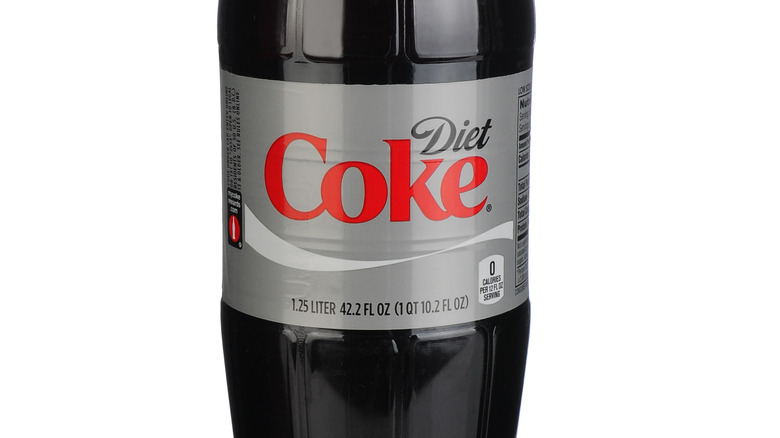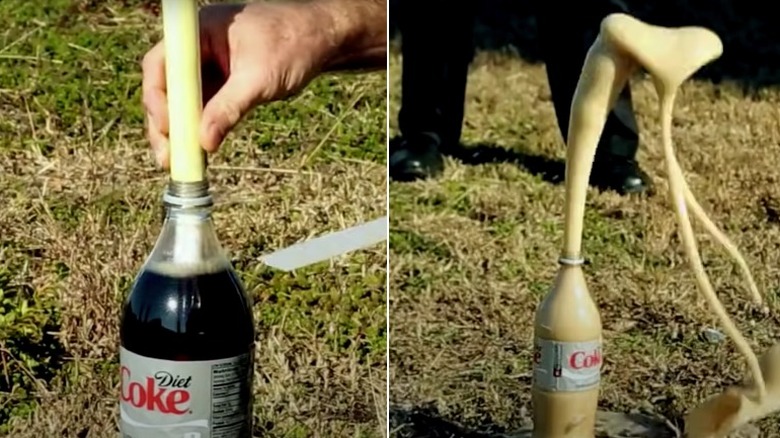Here's What Really Causes Diet Coke And Mentos To React
Whether you have personally conducted the experiment or watched it in internet videos, you are probably aware that combining Mentos with Diet Coke causes an explosive reaction, with foamy liquid violently erupting from a two-liter upon depositing said Mentos into the bottle. But what is the science behind this thrilling visual display? Is it some sort of chemical reaction between Mentos and Diet Coke that is producing the explosion?
Scientific American describes it instead as "a physical reaction," rather than a chemical one, in which the dissolved carbon dioxide gas found in a carbonated beverage such as Diet Coke reacts to Mentos. As the outlet explains, "those gas bubbles want to escape," and "to create bubbles, the carbon dioxide needs to interact with itself, which means that the carbon dioxide's bonds with water in Diet Coke must be broken."
Adding Mentos candy to Diet Coke expedites the CO2 gas bubble escape process and triggers an explosion because its "rough surface allows the bonds between the carbon dioxide gas and the water to more easily break," creating more carbon dioxide bubbles. Still not quite getting it? Don't worry, legitimate scientists have actually studied this thing. Here's what they found.
The science behind the reaction
Students in Dr. Tonya Coffey's Appalachian State University's physics class tested the science behind the volatile Mentos/Diet Coke reaction, publishing their results in the American Journal of Physics in 2008. They, too, concluded that the "surface roughness" of the Mentos is "one of the main causes of the reaction."
As it sinks, the Mentos produces more bubbles, which react with carbon dioxide in the soda, rewarding you with a Diet Coke geyser. Speed also matters, and the faster the Mentos sinks, the larger the eruption. Mentos are dense candies, which aids the sinking process — a factor the study explored by comparing reactions made with whole Mentos versus crushed ones, the latter of which resulted in weaker eruptions. Additionally, diet sodas produce bigger reactions than regular sodas, because diet sodas such as Diet Coke contain potassium benzoate and the artificial sweetener, aspartame, as opposed to sugar or corn syrup. "These ingredients reduce the work required for bubble formation, allowing carbon dioxide to rapidly escape from the soda," Coffey and her students found, after comparing the "contact angle for aspartame and water in contrast to pure water or sugar water."
And while Snopes long ago debunked the rumor that eating Mentos and drinking Diet Coke can kill you, exercising caution when attempting to mix these two products together is recommended. However, the American Chemical Society provides step-by-step instructions on how to safely make a Mentos soda fountain, so this is one experiment you can try at home.

